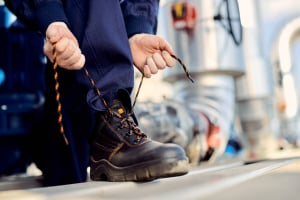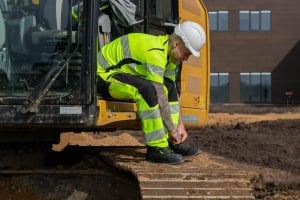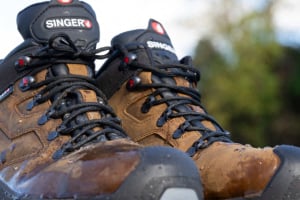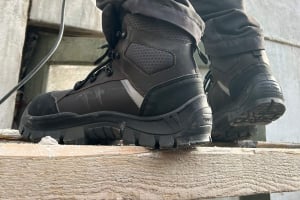
Prevention of musculoskeletal disorders (MSD)
In a performance-driven work environment, musculoskeletal disorders (MSDs) are emerging as a major problem, affecting health and productivity. These disorders, affecting areas such as the neck, shoulders and back, result from multiple occupational risk factors. This article offers preventive strategies and exercises to combat MSDs and promote a balanced and healthy professional life.
Summary
Understanding MSDs to better prevent them
To effectively combat MSDs, you must first understand them. Musculoskeletal disorders often result from a combination of risk factors such as repetition of movements, restrictive postures, excessive efforts or exposure to mechanical vibrations.
Preventing MSDs begins with a risk assessment within the company. This involves analyzing workstations, gestures and postures adopted by employees during their daily physical activity. This assessment highlights practices that can be optimized to reduce the risk of developing MSDs.
Adopting good postures and incorporating relaxation and muscle strengthening exercises throughout the day represent essential preventive measures. It is also crucial to equip yourself with ergonomic equipment, take regular breaks and vary tasks to avoid overloading certain parts of the body.
Evaluation and adaptation of workstations
Assessing risks within the company is an essential step in preventing MSDs. This approach consists of inspecting workstations in search of factors likely to contribute to the appearance of MSDs. This may include spatial organization, quality of furniture, tools or even environmental conditions.
Following this assessment, it is often necessary to make modifications to adapt workstations to the needs of employees.
How to adapt your workstation?
To effectively adapt your workstation and reduce the risk of musculoskeletal disorders, follow these practical tips:
- Choice of an ergonomic chair: Opt for a chair offering good lumbar support, adjustable in height, and with adjustable armrests.
- Arm and wrist supports: Use supports to rest your arms and wrists when typing or using the mouse.
- Computer Screen Adjustment: Adjust your screen to eye level and a comfortable distance to avoid eye and neck strain.
- Spatial layout: Make sure your workspace is well organized, with enough room to move and change posture.
- Regular break and stretch: Incorporate short but frequent breaks to stretch and change posture, thereby reducing muscle fatigue.
- Gesture and posture training: Participate in training to learn correct lifting techniques and appropriate postures while working.
- Consultation with experts: If necessary, seek advice from ergonomists or occupational health specialists to further personalize the adaptation of your workstation.
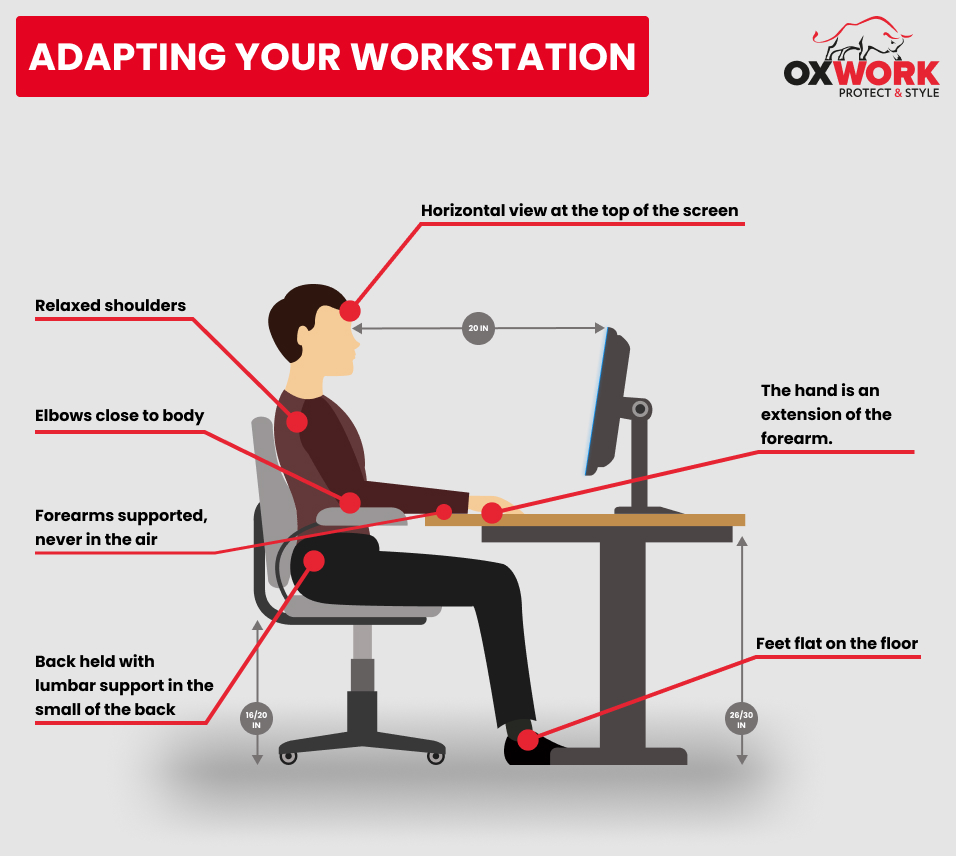
Continuous training of staff on appropriate gestures and postures is also crucial. Raising team awareness of the importance of health and safety at work helps develop a corporate culture geared towards the prevention of occupational illnesses and accidents.
Good handling practices
Manual handling represents a major source of MSDs in many sectors of activity. Fortunately, good practices can help minimize risks. This starts with adequate training of employees in lifting and load transport techniques.
It is essential to use the strongest muscles in the body, such as those in the legs and thighs, rather than straining the back when lifting a load. Recommending the use of handling assistance equipment such as trolleys, hand trucks or mechanical lifting systems is also essential to prevent the occurrence of MSDs.
Respecting personal limits regarding weight and handling capacity is a golden rule. Safety comes first, and it is important to seek help or use mechanical tools when the load is too heavy.
Work equipment and accessories to prevent MSDs
The use of adapted work equipment is essential in the prevention of musculoskeletal disorders (MSD). Here are some recommendations for choosing and using suitable equipment and accessories:
- Comfortable workwear: Choose workwear that offers freedom of movement and which do not restrict gestures. Breathable and flexible fabrics are preferable to avoid strain on the body.
- Ergonomic safety shoes: Choose safety shoes that properly support the foot and ankle, thereby reducing fatigue and the risk of injury. The soles must be adapted to the work surface to provide good grip and optimal comfort.
- Supportive accessories: Use lumbar belts or knee pads, if necessary, during tasks involving intense physical effort or prolonged postures. These accessories help support stressed areas and prevent pain.
The use of back belts or ergonomic shoes can play a key role in preventing MSDs and also help relieve existing lower back pain. For more information on managing lower back pain, see our detailed article How to relieve lower back pain.
- Ergonomic tools: Choose tools designed to minimize effort and repetitive movements. Fitted sleeves, balanced weights and ergonomic designs help reduce strain on muscles and joints.
- Adapted protective gloves: Wear protective gloves appropriate for your activity to reduce vibration and pressure exercised on the hands and wrists.
- Fit-fitting protective eyewear: Properly fitted eyewear can help reduce eye strain and unnecessary head movements, often linked to neck and shoulder MSDs.
Muscle strengthening and relaxation exercises
The integration of muscle strengthening and relaxation exercises into the daily routine is a pillar of the prevention of musculoskeletal disorders. These exercises help keep muscles and joints flexible and strong, reducing the risk of injury.
A few minutes of stretching at the start of the day, active breaks with light exercises at the office, or muscle relaxation sessions at the end of the day can contribute significantly to preserve your health at work.
Exercises targeting the areas most stressed by your activity, such as the shoulders, neck or back, should be favored. In addition, regular practice of varied physical activity outside of working hours is recommended to maintain optimal physical condition and prevent MSDs.
Involve all stakeholders in the company
The prevention of MSDs is not the business of a single person, but that of everyone involved in the company. This involves the active involvement of management, managers, occupational health and safety teams, as well as each employee.
An effective prevention approach includes information sharing, training and transparent communication on the risks linked to MSDs. Encouraging the reporting of early symptoms and suggesting improvements to working conditions are also practices to be encouraged.
The establishment of a health and safety committee or the designation of a MSD prevention representative can centralize efforts and ensure rigorous monitoring of the actions put in place. Collaboration with health professionals, such as ergonomists or physiotherapists, can provide valuable expertise in the implementation of prevention strategies.
In conclusion
Prevention of MSDs requires the integration of good practices and concerted actions within the corporate culture, including regular risk assessments to adapt workstations. Prioritizing health and safety at work leads to happier and more productive employees, reducing absences due to work-related illnesses.
Investing in the prevention of MSDs ensures the sustainability of the company and improves the quality of life of employees. By adopting these measures and integrating muscle strengthening and relaxation exercises into the daily routine, we contribute to a work environment where health is an essential standard.


